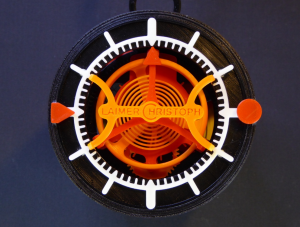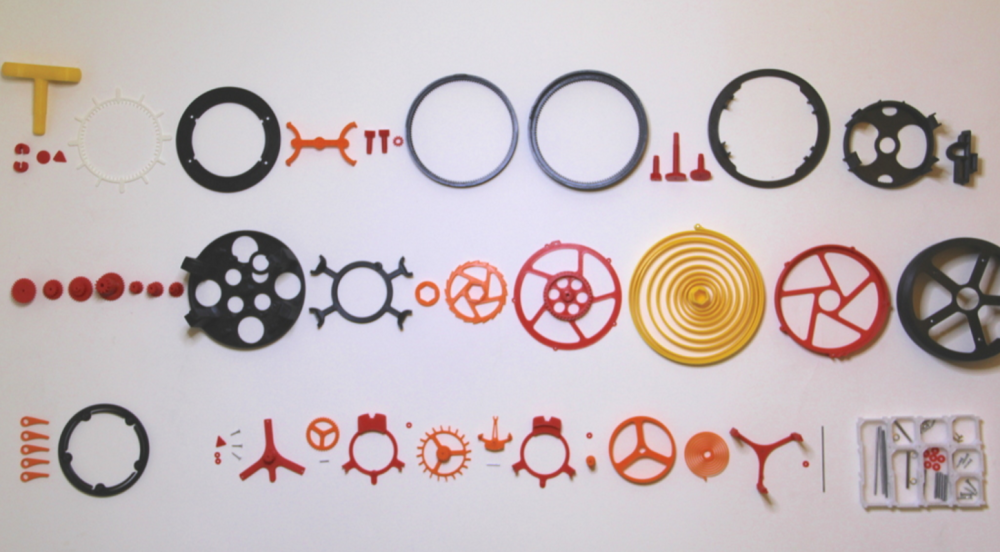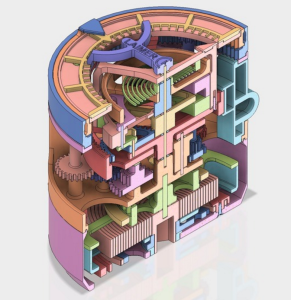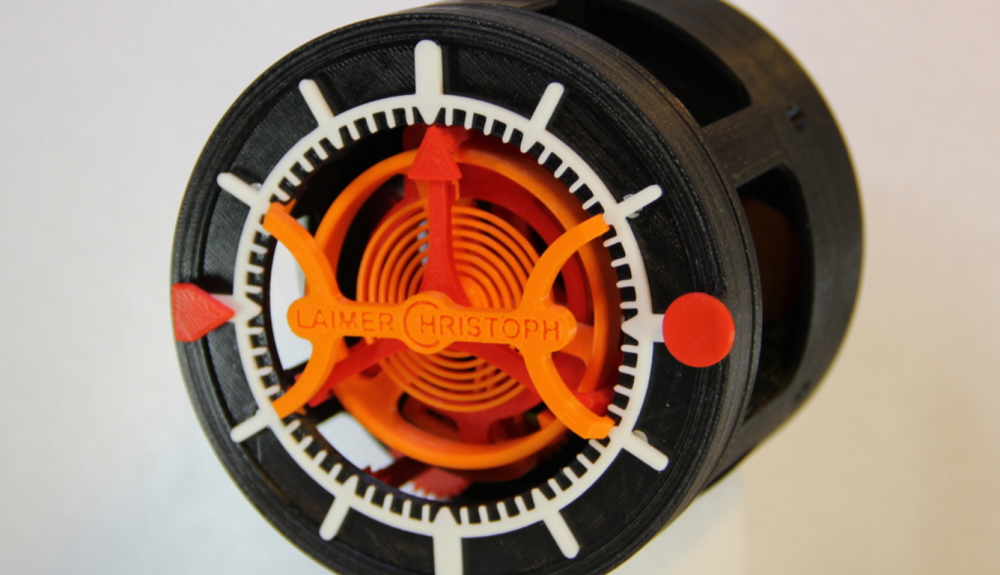In case you’re not familiar with what a tourbillon is, it is a mechanical component to a watch that prevents gravity from slowing down the watch and reducing accuracy. In an era when most watches are battery operated tourbillons are pretty rare, however faux tourbillons are quite common. Basically if you see a battery operated watch that has what looks like a series of gears exposed on the face then it is mimicking the look of an automatic watch with a tourbillon monitored second hand. Even most modern automatic watches don’t use real tourbillons anymore, and in fact horologists (people who study the measurement of time) have long debated whether they actually helped accuracy or were merely an expensive and complicated decoration.
The art of watchmaking in this day and age is itself becoming a novelty, so watches with real tourbillons are even rarer and usually are only featured on very expensive watches due to their incredibly complex and difficult to engineer mechanics. Only the most skilled of watchmakers can create one that is accurate, and because they are so uncommon they are often shown off essentially as a status symbol or a sign of wealth. Producing the small and delicate parts used to make a working tourbillon using traditional materials, usually solid metals, but sometimes even precious metals, is extremely difficult, but using 3D printed components to make a functional tourbillon is a remarkable achievement.
But Swiss engineer and Thingiverse user Christoph Laimer has successfully fabricated a working clock with a tourbillon that is made entirely from 3D printed gears, mechanisms and components. Laimer’s clock is a marvel of clock design and an example of his 3D printing prowess. The parts weren’t printed on an industrial 3D printer that makes end-use parts, but rather in his home on an Ultimaker 2 desktop 3D printer. The case itself was printed in PETG while all of the internal gears and mechanisms were printed with standard PLA.
I’ve seen a few larger clocks and simple gear mechanisms 3D printed, but this is the first time that I’ve seen a timekeeping device as complex and difficult to engineer as Laimer’s clock with a tourbillon. The clock was designed in Autodesk’s Fusion 360 design software suite and was tested virtually to make sure that all of the parts would function as envisioned. All in total Laimer 3D printed more than 50 individual parts to build his clock, and only needed to use a small amount of pins and screws to hold everything together.
Here is a video of Laimer explaining how his clock works and how he designed it:
Most of the clock’s components were 3D printed in the Ultimaker’s standard 0.1mm layer resolution and none of the parts required any supports or rafting. However some of the more delicate and smaller-scale parts, like the hairspring and some of the gears, were printed with a 0.06 mm layer resolution. Even the clock’s spring was 3D printed, and because the spiral plastic shape was so complex Laimer needed to tweak the settings on his Ultimaker 2 in order to get it to print correctly. The spring drives the Swiss lever escapement that is embedded inside of the clock’s tourbillon and it will run for 35 minutes before it will need to be wound up again.
You can see a 26-minute-long video of the clock running as proof that it works here:
Laimer has posted several detailed material lists and assembly instructions up the Thingiverse page so anyone can attempt to 3D print and assemble their own version. However if anyone is thinking of taking a shot at it, be warned that it is quite an advanced 3D printing project that is probably not suited to beginners, or heck even most advanced makers. Discuss this cool design in the Tourbillion 3D Printed Clock forum on 3DPB.com.
Subscribe to Our Email Newsletter
Stay up-to-date on all the latest news from the 3D printing industry and receive information and offers from third party vendors.
You May Also Like
UW-Madison Engineers 3D Print RAM Devices in Zero Gravity with NASA Funding
Engineers from the University of Wisconsin-Madison (UW-Madison) 3D printed RAM (Random Access Memory) device units in zero gravity to show that electronic components can be produced in space. This capability...
Daring AM: Rocket Lab Shoots for the Stars, Astrobotic Wants to 3D Print on the Moon
Once again, space exploration teams up with the 3D printing industry, launching projects that could change how we explore space. Pioneering space manufacturer Rocket Lab (Nasdaq: RKLB) secured a $14.49...
Stratasys Will Take 3D Printing to the Moon
Stratasys (Nasdaq: SSYS) is setting off on a unique mission that will take 3D printing where it has never gone before—the Moon. In a significant step for space exploration, the...
3D Printing Webinar and Event Roundup: February 25, 2024
It’s another busy week of webinars and events in the AM industry, including Silicone Expo Europe in Amsterdam, an open house for Massivit in North America, and the AM for...






































